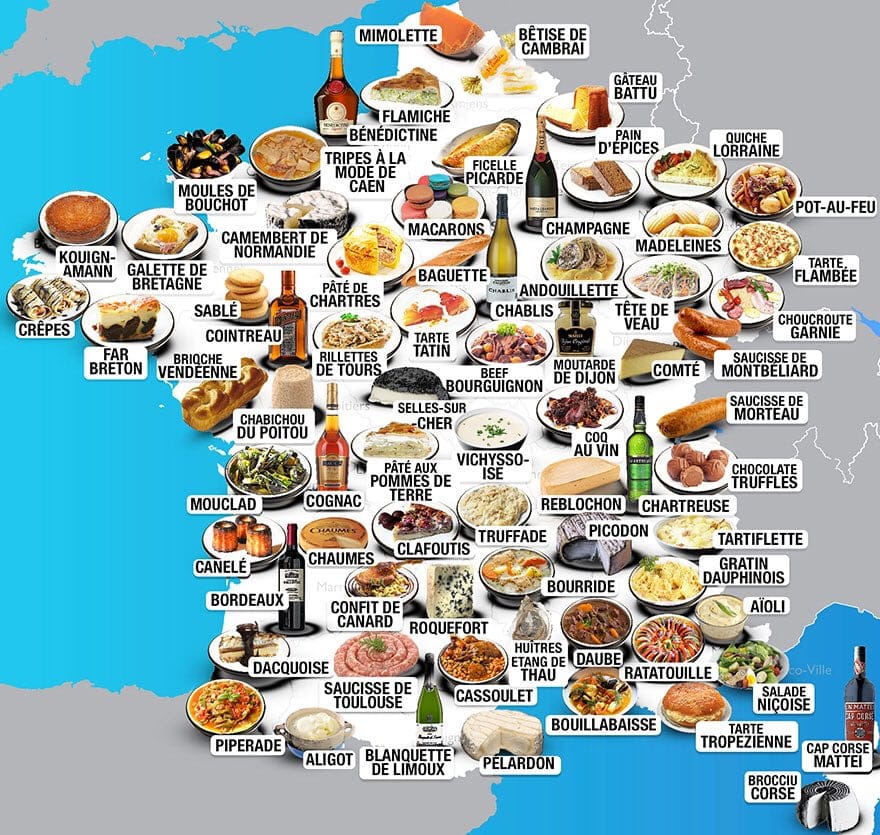
French cuisine is synonymous with elegance and refinement, but its true magic lies in its incredible diversity. Each region boasts unique specialties, reflecting local ingredients, history, and traditions.
Let’s embark on a delicious journey to discover the most iconic dishes from some of France’s biggest administrative localities:
Table of Contents
ToggleBretagne: Crêpes
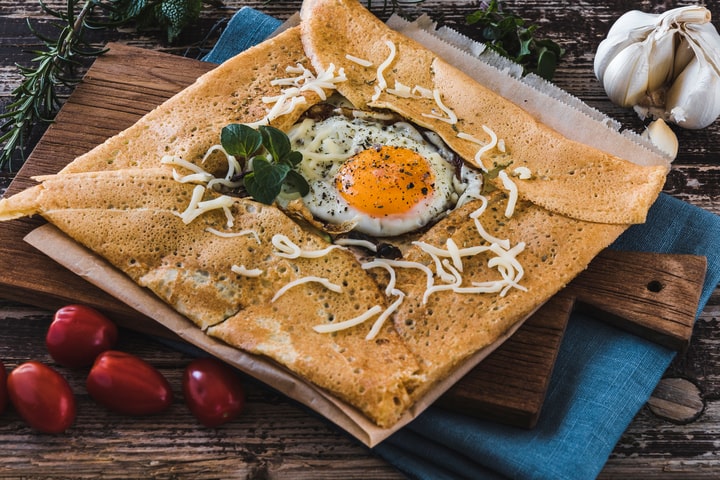
Brittany, in northwest France, is the undisputed kingdom of the crêpe. These thin pancakes, made from buckwheat or wheat flour, are enjoyed for both savory and sweet meals. Savory galettes are filled with savory ingredients like ham, cheese, and eggs, while sweet crêpes are adorned with jams, fruits, and decadent spreads like Nutella.
History:
Crêpes have a long history in France, dating back to Roman times. Buckwheat, a naturally gluten-free grain, was readily available in Brittany and became the foundation for savory galettes. Crêpes became a versatile dish, enjoyed by both peasants and nobility throughout the centuries.
Ingredients:
- Farine de sarrasin (Buckwheat flour) or Farine de blé (Wheat flour)
- Lait (Milk)
- Oeufs (Eggs)
- Beurre salé (Salted butter) (For savory crêpes)
- Confiture (Jam), Fruits (Optional) (For sweet crêpes)
- Nutella (Chocolate hazelnut spread) (Optional) (For sweet crêpes)
Normandie: Camembert Frit (Fried Camembert)
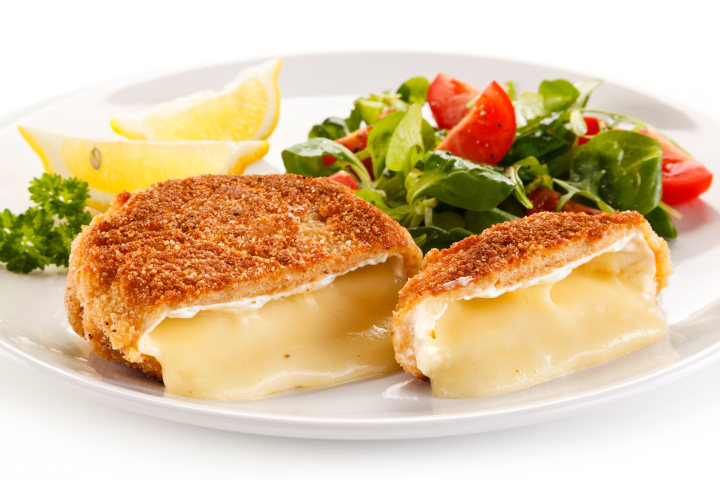
Normandy, the birthplace of Camembert cheese, offers a delightful twist on this classic: Camembert Frit, or fried Camembert. Slices of the rich, creamy cheese are coated in bread crumbs or egg batter and then deep-fried until golden brown and gooey. The contrast between the crispy exterior and the warm, melty cheese is simply irresistible.
History:
Camembert Frit’s origins are relatively recent, likely emerging in the mid-20th century as a way to utilize leftover or slightly aged Camembert. The dish quickly gained popularity, becoming a staple in Normandy’s bars and restaurants.
Ingredients:
- Camembert (Camembert cheese)
- Farine (Flour) or Chapelure (Bread crumbs)
- Oeuf (Egg) (Optional)
- Huile végétale (Vegetable oil)
Hauts-de-France: Moules-Frites (Mussels and Fries)
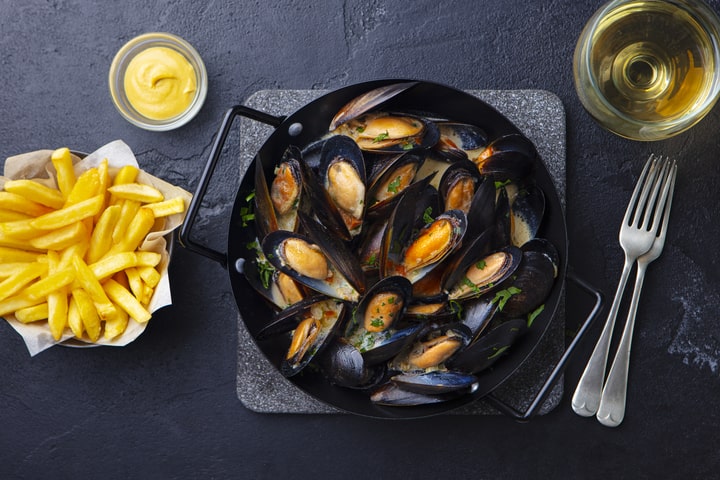
This quintessential seaside dish reigns supreme in northern France, particularly Hauts-de-France. Fresh mussels (moules) are steamed or cooked in white wine, garlic, and herbs, creating a flavorful broth perfect for dipping thick-cut fries (frites). Variations abound, with some adding cream, onions, or even beer to the cooking liquid.
History:
Mussels have been a staple food source along the French coast for centuries. The pairing with fries likely originated in Belgium, a neighboring region with a similar culinary heritage. The simplicity and affordability of Moules-Frites made it a popular dish amongst both fishermen and working-class families.
Ingredients:
- Moules (Mussels)
- Vin blanc (White wine)
- Ail (Garlic)
- Herbes de Provence (Provençal herbs)
- Pommes de terre frites (French fries)
- Crème fraîche (Heavy cream) (Optional)
- Oignons (Onions) (Optional)
- Bière (Beer) (Optional)
Grand Est: Choucroute Garnie (Sauerkraut with Accompaniments)
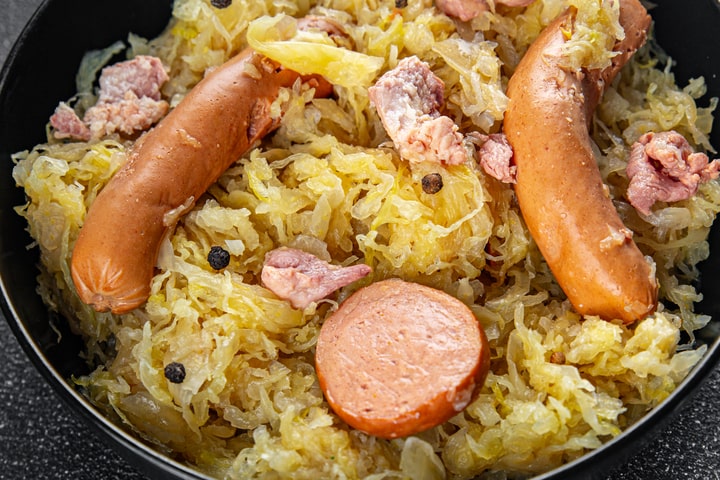
This hearty dish hails from the Alsace region, bordering Germany. Choucroute Garnie features layers of sauerkraut (choucroute in French) – fermented cabbage with a tangy flavor – simmered with white wine, juniper berries, and other aromatics. The star of the show, however, is the assortment of accompaniments piled high on top. Traditionally, it includes sausages like knackwurst and frankfurters, smoked pork belly (poitrine fumée), and sometimes even fish like salmon.
History:
Choucroute Garnie’s origins can be traced back to the Roman Empire, where cabbage was a staple food. The fermentation process, likely influenced by neighboring Germanic cultures, allowed for longer storage during harsh winters. The dish evolved over centuries, with the addition of meats becoming a symbol of prosperity.
Ingredients:
- Choucroute (Sauerkraut): Fermented cabbage
- Vin blanc (White wine)
- Baies de genièvre (Juniper berries)
- Saucisses fumées (Smoked sausages)
- Poitrine fumée (Smoked pork belly)
Pays de la Loire: Rillettes du Mans
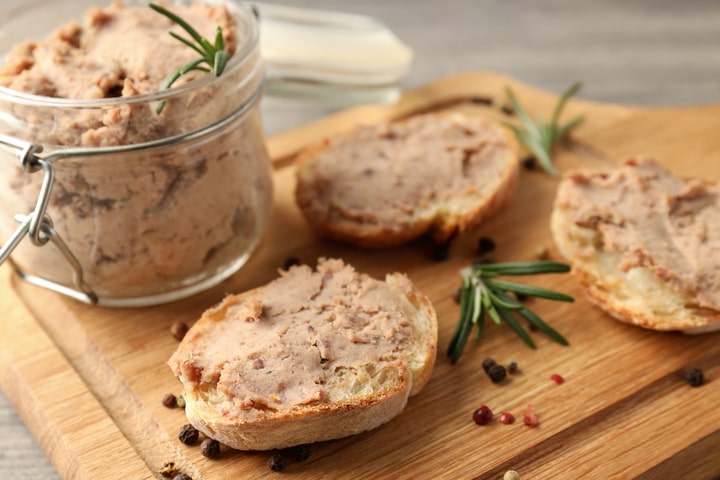
Hailing from Le Mans, this shredded pork spread is a Pays de la Loire treasure. Slow-cooked pork is confited in its own fat, resulting in a rich, creamy texture and a deeply savory flavor. Rillettes du Mans is a versatile ingredient, enjoyed on its own or incorporated into various dishes.
History:
Rillettes du Mans emerged from the tradition of preserving meats. The slow-cooking process not only enhanced the flavor but also extended the shelf life of pork, making it a valuable food source during colder months.
Ingredients:
- Viande de porc (Pork)
- Gras de porc (Pork fat)
- Oignons (Onions)
- Épices (Spices)
Centre-Val de Loire: Tarte Tatin

This iconic upside-down apple tart is a true Centre-Val de Loire specialty. Caramelized apples nestled beneath a buttery pastry crust create a textural and flavor contrast that’s simply irresistible. Legend attributes its invention to the Tatin sisters, who accidentally caramelized the apples before adding the pastry.
History:
While the exact origin story may be debated, Tarte Tatin’s connection to the Centre-Val de Loire region is undeniable. The abundance of apples in the region likely contributed to its rise to fame, becoming a cherished dessert enjoyed for generations.
Ingredients:
- Pommes (Apples)
- Beurre (Butter)
- Sucre (Sugar)
- Pâte feuilletée (Puff pastry)
Île-de-France: Croque-Monsieur

The croque monsieur, a Parisian staple, transcends its humble origins as a grilled ham and cheese. Thinly sliced ham and melty Gruyère cheese nestled between slices of toasted bread create a symphony of textures and flavors. A touch of creamy béchamel sauce adds richness, making this a satisfying quick bite or a comforting meal.
History:
Emerging in early 20th-century Paris, the croque monsieur’s exact inventor remains a mystery. Regardless, it quickly captured hearts (and stomachs) becoming a mainstay in cafes and bistros.
Ingredients:
- Pain (Bread): Slices of white bread provide a sturdy base.
- Jambon (Ham): Thinly sliced ham, often jambon de Paris, adds a salty, smoky touch.
- Fromage (Cheese): Gruyère cheese, a melty semi-hard cheese, is the traditional choice.
- Béchamel (Sauce) (Optional): This creamy sauce, made with milk, butter, and flour, adds richness.
Bourgogne-Franche-Comté: Boeuf Bourguignon

This slow-cooked beef stew in red wine is a culinary masterpiece from Bourgogne-Franche-Comté. Rich and flavorful, Boeuf Bourguignon showcases the region’s renowned wines and highlights the art of slow cooking. Its origins are linked to the peasant tradition of using readily available ingredients, including red wine, a staple in the region.
History:
Boeuf Bourguignon’s exact origins are unclear, but its connection to Burgundy’s winemaking tradition is undeniable. Peasants likely used red wine to enhance the flavor of tougher cuts of meat, creating a comforting and flavorful dish.
Ingredients:
- Boeuf (Beef)
- Vin rouge de Bourgogne (Burgundy red wine)
- Oignons (Onions)
Nouvelle-Aquitaine: Cannelés
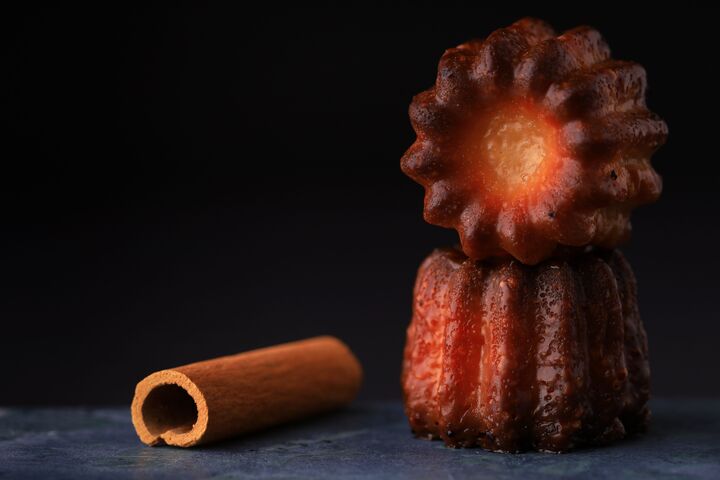
These small, cylindrical pastries are a delightful treat from Nouvelle-Aquitaine. Cannelés boast a caramel
ized crust and a soft, custardy interior flavored with vanilla and rum. They are traditionally baked in copper molds, which contribute to their unique shape and texture.
History:
Cannelés originated in Bordeaux during the 18th century, likely stemming from convent baking traditions. Initially, they were made with leftover egg yolks donated by nuns to the poor, but they quickly gained popularity and became a beloved regional specialty.
Ingredients:
- Farine (Flour)
- Sucre (Sugar)
- Lait (Milk)
- Œufs (Eggs)
- Beurre (Butter)
- Rhum (Rum)
- Vanille (Vanilla)
Auvergne-Rhône-Alpes: Raclette
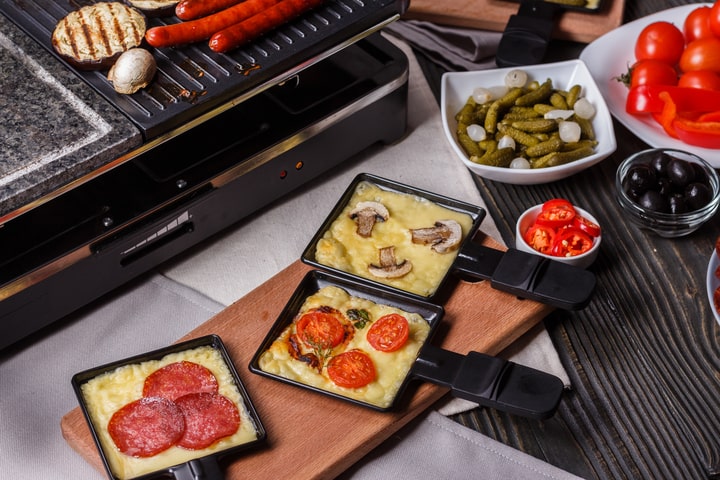
This quintessential alpine dish hails from Auvergne-Rhône-Alpes, particularly regions like Savoy and Haute-Savoie. La Raclette features a wheel of Raclette cheese, a semi-hard cheese with a rich flavor, melted over melted potatoes, cured meats, and pickled vegetables. Traditionally enjoyed communally, it’s a hearty and convivial meal perfect for colder months.
History:
La Raclette’s origins can be traced back to the mountain shepherds of the region. They would melt cheese over an open fire and scrape (racler in French) it onto slices of bread or boiled potatoes. Over time, the dish evolved, becoming a centerpiece for communal meals and celebrations.
Ingredients:
- Fromage à raclette (Raclette cheese)
- Pommes de terre (Potatoes)
- Charcuterie (Cured meats)
- Cornichons (Pickled gherkins)
Provence-Alpes-Côte d’Azur: Bouillabaisse
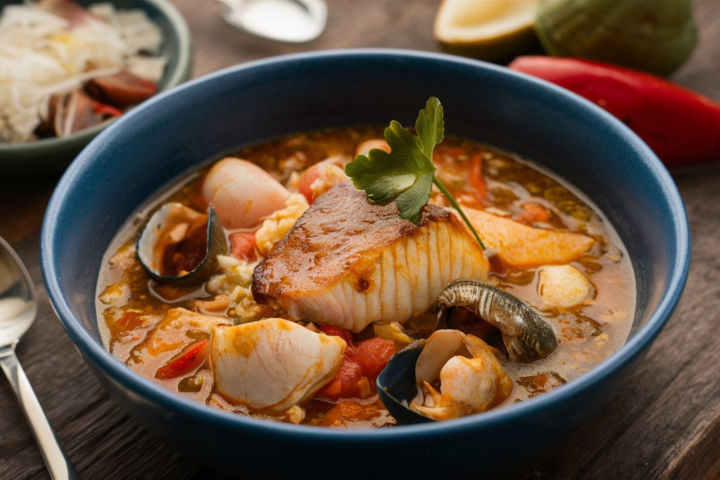
Bouillabaisse is a traditional fisherman’s stew originating from Marseille and the Provence-Alpes-Côte d’Azur region. This hearty dish features a variety of Mediterranean fish and shellfish simmered in a saffron-infused broth, often served with rouille (a garlicky saffron mayonnaise) and crusty bread.
History:
Bouillabaisse has ancient roots, with its name derived from the Provençal words “bouillir” (to boil) and “abaisser” (to reduce heat). Originally, it was a simple fisherman’s stew made from the catch of the day that was too bony or unappealing to sell in the markets. Over time, it evolved into a celebrated dish, enriched with Mediterranean flavors.
Ingredients:
- Poissons et fruits de mer (Fish and shellfish)
- Bouillon de poisson (Fish broth)
- Ail (Garlic)
- Tomates (Tomatoes)
- Safran (Saffron)
Here’s the corrected version of the HTML content:
“`html
Corse: Charcuterie
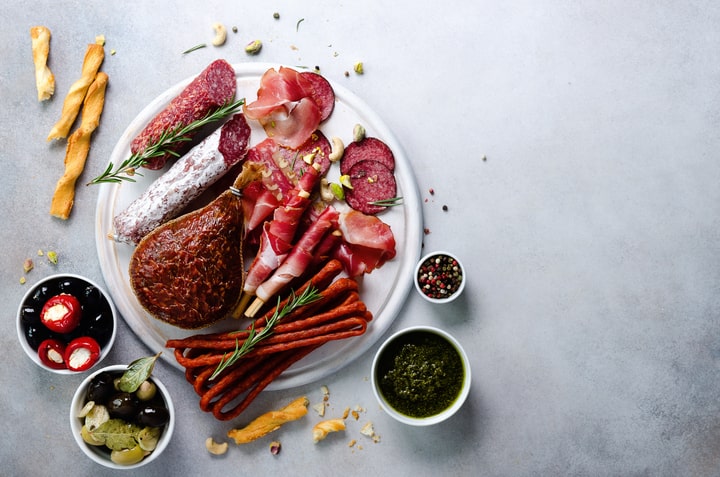
Beyond the delightful Brocciu cheese, Corsica boasts a rich tradition of charcuterie, reflecting the island’s unique history and agricultural practices. Locally raised pigs are the stars, with traditional methods of air-drying, salting, and smoking used to create a variety of flavorful cured meats.
Signature Corsican Charcuterie:
- Coppa: A dry-cured pork loin, seasoned with pepper and juniper berries, offering a rich, complex flavor.
- Figatellu: A unique sausage made from pork liver, seasoned with spices and herbs, often grilled or pan-fried.
- Lonzu: A dry-cured pork tenderloin, similar to prosciutto but with a more pronounced saltiness and herbal notes.
- Prisuttu: A dry-cured ham, similar to prosciutto but with a smokier flavor due to the use of chestnut wood for smoking.
- Sanglier: Wild boar charcuterie, featuring a more robust and gamy flavor compared to pork-based options.
About us
If you’re looking to deepen your understanding of the French language and culture, consider connecting with L’Atelier An Phu in Saigon, Vietnam.
Whether you’re a beginner or seeking to refine your skills, L’Atelier An Phu provides a supportive environment with experienced instructors who are passionate about sharing the nuances of French language and culture.
Contact us today to start your journey towards fluency and cultural insight.






